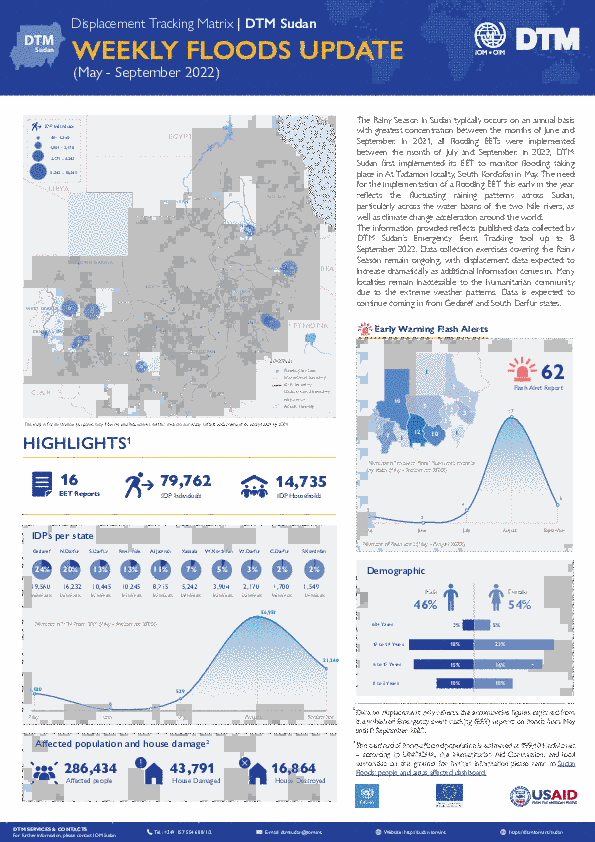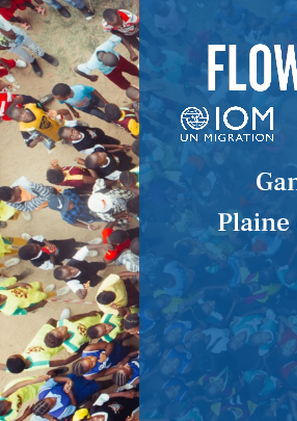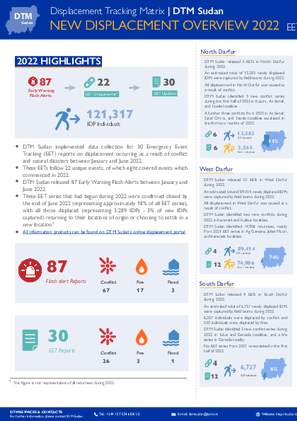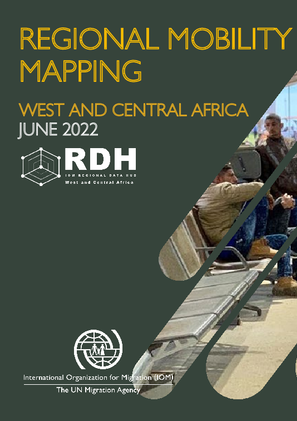-
Countries
-
Data and Analysis
-
Special Focus
-
Crisis Responses

Contact
DTM Türkiye, dtmturkey@iom.int
Language
English
Location
Republic of Türkiye
Period Covered
Aug 01 2022
Aug 31 2022
Activity
- Flow Monitoring
- Migrants presence
- Mobility Tracking
According to the latest available figures from the Turkish Presidency of Migration Management (PMM), there are more than 5* million foreign nationals present in Turkish territory, 3.6* million of whom are seeking international protection. Most are Syrians (3,654,866* individuals) who are granted temporary protection status. In addition, international protection applicants from countries including Afghanistan, the Islamic Republic of Iran and Iraq constitute another group of foreign nationals. According to
PMM, there were 29,256* international protection applicants present in Türkiye in 20211, published annually. Moreover, according to UNHCR**, there are close to 330,000 international protection status holders and asylum-seekers. The number of foreign nationals has decreased by 54,776 in comparison to August 2021 (3.7 million foreign nationals).
In addition, there are 1,392,725* foreign nationals present in Türkiye holding residency permits, including humanitarian residency holders. Compared to August 2021, this is an increase of 190,497 individuals. The exact number of humanitarian residency holders is unknown, but it is estimated that there are more than several thousand humanitarian residency permit holders.
*Data source PMM, 01.09.2022
**Data source UNHCR, July 2022

Contact
dtmsudan@iom.int
Language
English
Location
Sudan
Period Covered
Jan 01 2022
Sep 08 2022
Activity
- Event Tracking
The Rainy Season in Sudan typically occurs on an annual basis with greatest concentration between the months of June and September. In 2021, all flooding EETs were implemented between the month of July and September. In 2022, DTM Sudan first implemented its EET to monitor flooding taking place in At Tadamon locality, South Kordofan in May. The need for the implementation of a flooding EET this early in the year reflects the fluctuating raining patterns across Sudan, particularly across the water basins of the two Nile rivers.
The information provided reflects published data collected by DTM Sudan’s Emergency Event Tracking tool up to 8 September 2022. Data collection exercises covering the Rainy Season remain ongoing, with displacement data expected to increase dramatically as additional information comes in. Many localities remain inaccessible to the humanitarian community due to the extreme weather patterns. Data is expected to continue coming in from South Darfur and Gedaref states.

Contact
dtmhaiti@iom.int
Language
English
Location
Haiti
Period Covered
Apr 23 2022
May 20 2022
Activity
- Event Tracking
Widespread violence between two gangs started on Sunday 24 April 2022, spread over six communal sections in the north
of Port-au-Prince before the situation progressively stabilised after 06 May (sources: media and humanitarian stakeholders).
Between 23 April and 20 May, IOM's Displacement Tracking Matrix (DTM) and the Haitian Directorate General of Civil
Protection (DGPC) estimated 34,600 individual displacement movements. At least 188 deaths and 113 people injured were
reported, and at least 81 houses burned. Based on data from the mobile network operator (MNO) Digicel Haiti up to 18 July 2022, and using 21 January to 21 April 2022 as baseline period, this report provides further evidence of large-scale displacement and additional information on these population movements. These conservative estimates suggest that:
- At least 27,200 Digicel subscribers left the affected area between 24 April and 8 May, with most of the likely internally displaced persons (IDPs) in the department of Ouest, Centre and Artibonite.
- The 1ère section of St-Martin (Delmas commune) is the section which hosted the largest numbers of likely IDPs among Digicel subscribers, at least 6,500 as of 08 May.
- A large share of the likely IDPs (60%) are spread across Haiti in small numbers, particularly to the north of Port-au-Prince
- Within the affected area, the 3ème Section de Bellevue (Tabarre Commune) experienced the largest drop of residents among Digicel subscribers (at least 7,700) and for the longest period, as the number of residents remained below the baseline for 50 days
- Flows of Digicel residents out of the affected area take place in two stages: initially mainly from the 3ème Section Bellevue (Tabarre), and later also from the 1ère Section des Varreux (Croix-des-Bouquets) and the 2ème Section des Varreux (Croix-des-Bouquets);

Contact
dtmsudan@iom.int
Language
English
Location
Sudan
Period Covered
Jan 01 2022
Jun 30 2022
Activity
- Mobility Tracking
- Event Tracking
DTM Sudan deploys its Emergency Event Tracking (EET) methodology to track sudden incidents of displacement, provide more frequent updates on the scale of displacement that occurs between Mobility Tracking rounds, and provide the humanitarian community with a first-of-its-kind evidence base to engage in life-saving and urgent interventions.
As soon as an incident takes place, DTM Sudan’s wide network of over 300 enumerators collect preliminary information on whether displacement has taken place, or potentially could. With this information, DTM Sudan activates Early Warning Flash Alerts within the first 24-48 hours of an incident to notify partners on sudden events here EET activities may subsequently take place. Subsequently, EET can then be activated within 72-96 hours of an incident induced by conflict or natural disaster to assist in rapid response planning.
Just as with Mobility Tracking, the EET methodology utilises key informant networks to monitor IDPs once displacement has occurred, continuing to track the IDP caseload along several indicators over time. Enumerators collect information on IDP population estimates (households and individuals), place of arrival/departure, locations of origin, reasons for displacement and return, shelter typology, protection vulnerabilities, and priority needs, amongst others. EETs also collect Sex and Age Disaggregated Data (SADD), which provides an insight into the demographic and specific gender nuances present in Sudan and is crucial for designing protection-focused programming and policies which prioritize access to basic services for vulnerable groups, such as women and children.
Through EET, DTM produces an evidence base for strategy and program design and development, humanitarian coordination, and joint funding appeals, as well as informing operational response planning to protect, assist, and advocate on behalf of vulnerable and displaced populations.
A Region on the Move report series for the East and Horn of Africa has been the regional flagship publication since 2017. Over the years, the report series has illustrated the main humanitarian situations, with a focus on internal displacement and mixed migration flows along the major migration corridors of this region. Building on the leading IOM World Migration Report series, the structure of the 2021 edition was revamped to explore mobility dynamics affecting the East and Horn of Africa region across its broader spectrum: from providing a regional overview of data and trends on international migrants to discussing specific groups of migrants, namely migrant workers, refugees, asylum seekers, internally displaced persons and irregular migrants along the main migratory corridors. A Region on the Move 2021, the ninth report in the series, builds on more than 20 data sources — official and operational — that examine different aspects of the multifaceted migration landscape.

Contact
DTMMozambique@iom.int
Language
English
Location
Mozambique
Period Covered
Sep 01 2022
Sep 06 2022
Activity
- Mobility Tracking
- Event Tracking
Fear of attacks and subsequent confirmed attacks in Ancuabe, Chiure, Memba and Erati districts by Non-State Armed Groups triggered 1,522 individual displacement movements within Ancuabe, Chiure, Ibo, Macomia, Mecufi, Metuge and Cidade de Pemba. An estimate of 59 Internally Displaced Persons (IDPs) have been identified with vulnerabilities. At least 59% of these movements are arrivals in Chiure, 24% in Metuge and 7% in Cidade de Pemba, 5% in Ibo, 3% in Macomia, and 2% in Mecufi.
New arrivals recorded within the reporting period map 511 individuals predominantly moving into displacement sites across Chiure (Mecolane, Marupa) and Metuge (Naminaue). All recorded movements represent individuals displaced for the first time. IOM teams observed an average of 254 individuals arriving at different locations within the reporting period (1 - 6 September) (please see below charts for further information). Movements in the region remain dynamic between host communities and displacement sites.

Contact
DTMMozambique@iom.int
Language
English
Location
Mozambique
Period Covered
Sep 03 2022
Sep 06 2022
Activity
- Mobility Tracking
- Event Tracking
Fear of attacks and subsequent confirmed attacks in Ancuabe, Chiure, Memba and Erati districts by Non-State Armed Groups triggered 8,651 individual displacement movements within Erati, Memba and Citade De Nampula. Verification of IDPs are ongoing across localities in Odinepa and Alua Posto (Erati District). Current reported estimates may include individuals displaced by earlier attacks reported across Southern CaboDelgado districts 2022.
Conflict-affected populations across Erati District are initially estimated to be as many as 38,000 Individuals/8,000 Households. However, verification of IDPs is ongoing across localities in Odinepa and Alua Posto (Erati District). Current reported estimates of 8,651 individuals may include individuals displaced by earlier attacks reported across Southern Cabo Delgado districts 2022. Records include 386 Internally Displaced Persons (IDPs) identified with vulnerabilities. At least 99% of these movements are arrivals in Erati, less than 1% in Cidade de Nampula.
Le rapport de cartographie des mobilites en Afrique de l'Ouest et du Centre presente les tendances de mobilites et facteurs de migration au sein de la region de l'Afrique de l'Ouest et du Centre (deplacements forces, transhumance, migration de main d'oeuvre, etc), soulignant la diversite et la complexite des mobilites dans la region. Le rapport se base sur les donnees recoltees au travers des outils de collecte de donnees de l'OIM et de donnes de partenaires tels que UNDESA, le HCR et les Ministeres de l'interieur.
The West and Central Africa Mobility Mapping report is a compilation of maps showing various mobility trends and mobility factors for movements to and from the West and central Africa region (forced displacement, transhumance, labour movements, etc.) This work is based on multiple data collection activities implemented by IOM and other actors (UNDESA, Ministries of Interior of various countries) and showcase the complexity of mobility in the region.

Contact
DTM Sudan; dtmsudan@iom.int
Language
English
Location
Sudan
Snapshot Date
Sep 04 2022
Activity
- Mobility Tracking
- Event Tracking
The DTM Emergency Event Tracking (EET) is deployed to track sudden displacement and population movements, provide more frequent updates on the scale of displacement, and quantify the affected population when needed. As a subcomponent of the new Mobility Tracking methodology in Sudan (Round Four), and activated on a need basis, EET utilises a broad network of key informants to capture best estimates of the affected population presence per location – a useful tool for humanitarian response planning and design.



